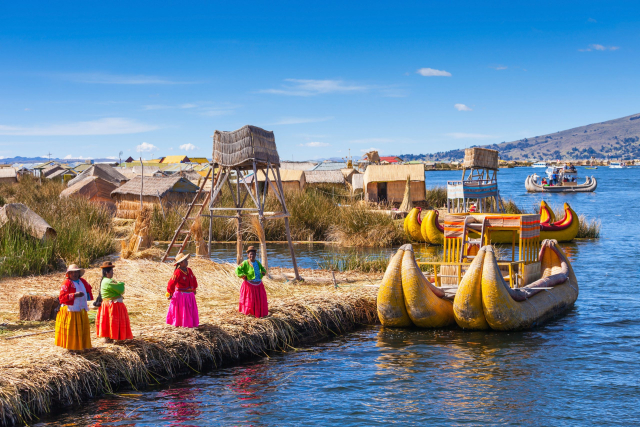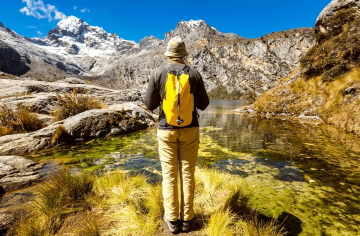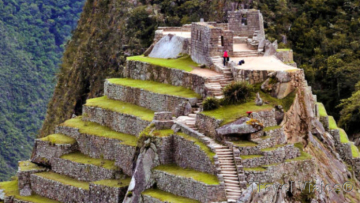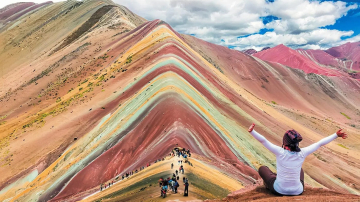Lake Titicaca , located between Peru and Bolivia , is more than just a body of water : it is an epicenter of history, culture and natural beauty. Known as the highest navigable lake in the world , at 3,812 meters above sea level , this sacred place for Andean cultures is home to floating islands , ancestral communities and breathtaking landscapes. A tour of its islands and peninsulas reveals living traditions, pre-Columbian architecture and an intimate contact with nature.
In this article, we will explore the main islands and peninsulas on the Peruvian side of the lake , offering a complete overview of its cultural and natural attractions . Get ready to discover a destination full of history and magic!
1. Uros Floating Islands: An Ancient Ingenuity
The floating islands of the Uros are perhaps the most iconic attraction of Lake Titicaca . Built entirely of totora, an aquatic plant that grows in the lake, these islands are home to communities that maintain a traditional way of life . Visitors can learn how the Uros build and maintain their islands, make their homes, and fish using techniques inherited from their ancestors.
A ride on a totora raft is a unique experience , as you enjoy panoramic views and learn about the symbolic relationship between this culture and its environment. In addition, local crafts offer an opportunity to take a piece of this fascinating culture home with you.
2. Taquile Island: Tradition and Textile Art
Located 35 kilometers from Puno, Taquile Island is famous for its cultural wealth and for being recognized by UNESCO as Intangible Cultural Heritage of Humanity thanks to its textile art. Here, the inhabitants maintain a system of community life and traditions that have lasted for centuries.
Touring Taquile means walking along trails with stunning views of the lake , visiting its agricultural terraces and meeting artisans who weave colorful hand-woven fabrics. The designs on their clothes are not only beautiful , but they also tell stories about their culture and relationship with nature. The traditional lunch, consisting of lake trout and Andean potatoes, is a delight that complements the experience.
3. Amantaní Island: The Island of the Gods
Amantani , known as “The Island of the Gods” , is known for its spirituality and hospitality . This island has no conventional hotels or restaurants ; instead, local families open their doors to travelers offering accommodation and home-cooked food.
One of the main activities is the hike to the temples of Pachatata and Pachamama , located on the hilltops. From there, the sunsets are simply spectacular , illuminating the lake with golden and orange hues . Visitors can also participate in cultural activities, such as typical dances and weaving workshops.
4. Capachica Peninsula: Nature and Tranquility
The Capachica Peninsula is one of the quietest and least explored destinations on Lake Titicaca. This place offers an intimate experience with nature, with sandy beaches and unparalleled views of the lake.
Capachica is also the ideal starting point for exploring other nearby islands, such as Amantani and Taquile. Visitors can enjoy scenic hikes , meet local farmers, and indulge in typical dishes prepared with fresh ingredients from the region.
5. Soto Island: A Hidden Treasure
Soto Island is a hidden gem of Lake Titicaca that few tourists know about. Unlike other more visited islands , Soto preserves its natural essence and tranquility.
Visitors can explore trails surrounded by native vegetation , watch waterfowl and relax on its small beaches. It is the perfect destination for those looking for a remote and authentic place , away from the crowds.
6. Esteves Island: Where History Meets Modernity
Located near the city of Puno , Esteves Island combines history and modernity . Here you will find one of the most exclusive hotels on the lake , but you can also explore archaeological remains and enjoy stunning views.
The proximity to Puno makes this island an excellent option for short visits , offering a combination of modern comforts and direct contact with the local culture.
Lake Titicaca is not just a stunning landscape ; it is a living testimony to Andean cultures and the interaction between humans and their environment. Each island and peninsula tells a different story, from the ancient engineering of the Uros to the textile traditions of Taquile and the sacred temples of Amantaní. These communities have found a balance between tourism and the preservation of their identity , offering visitors an authentic and enriching experience.
Visiting Lake Titicaca is like immersing yourself in a world where past and present coexist harmoniously . Whether you are looking for adventure, tranquility or an intimate approach to the local culture, this destination offers something for everyone. Make your next trip to Lake Titicaca an unforgettable experience!
We invite you to learn more about Peru here: Blogs from Peru.




